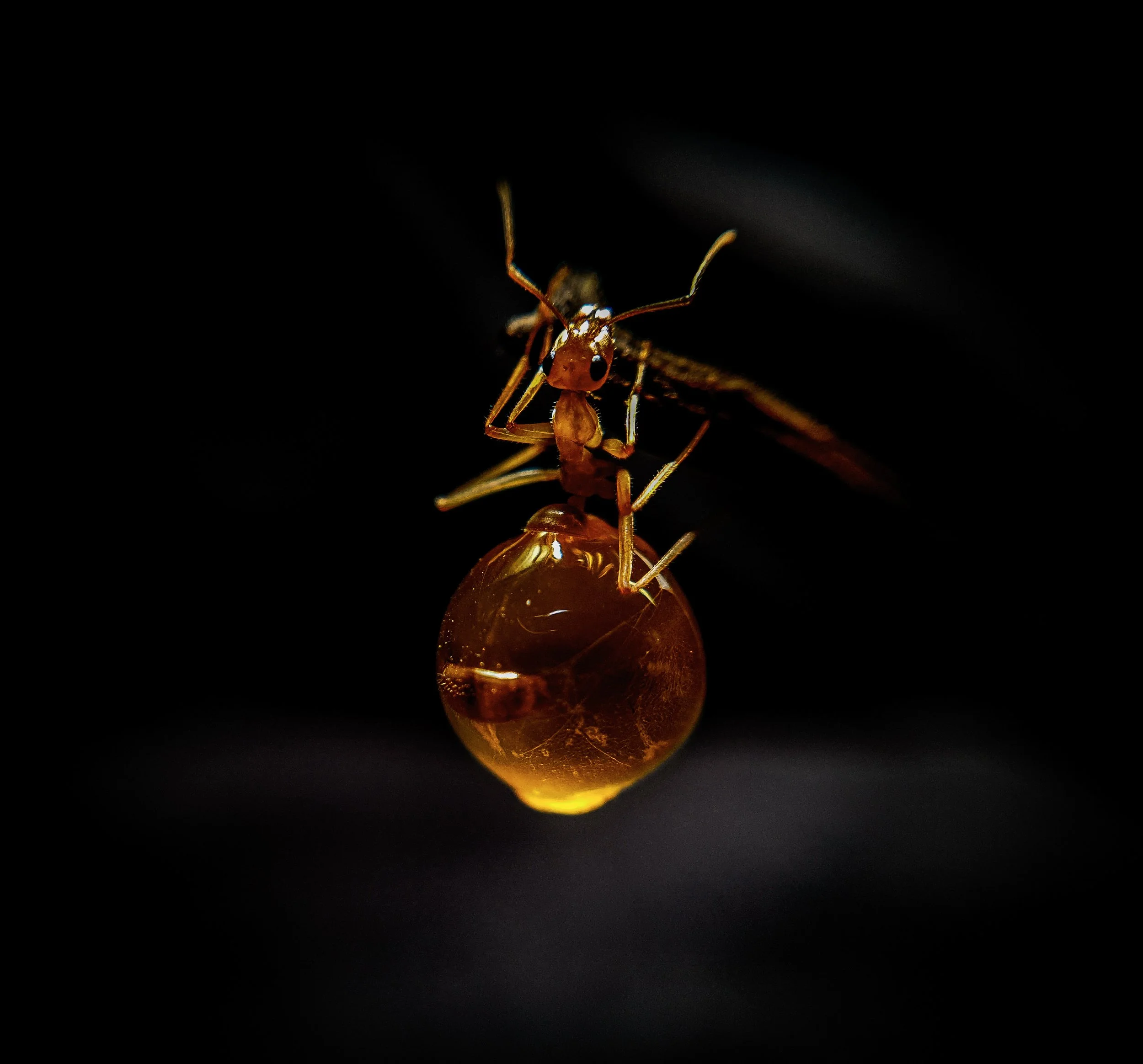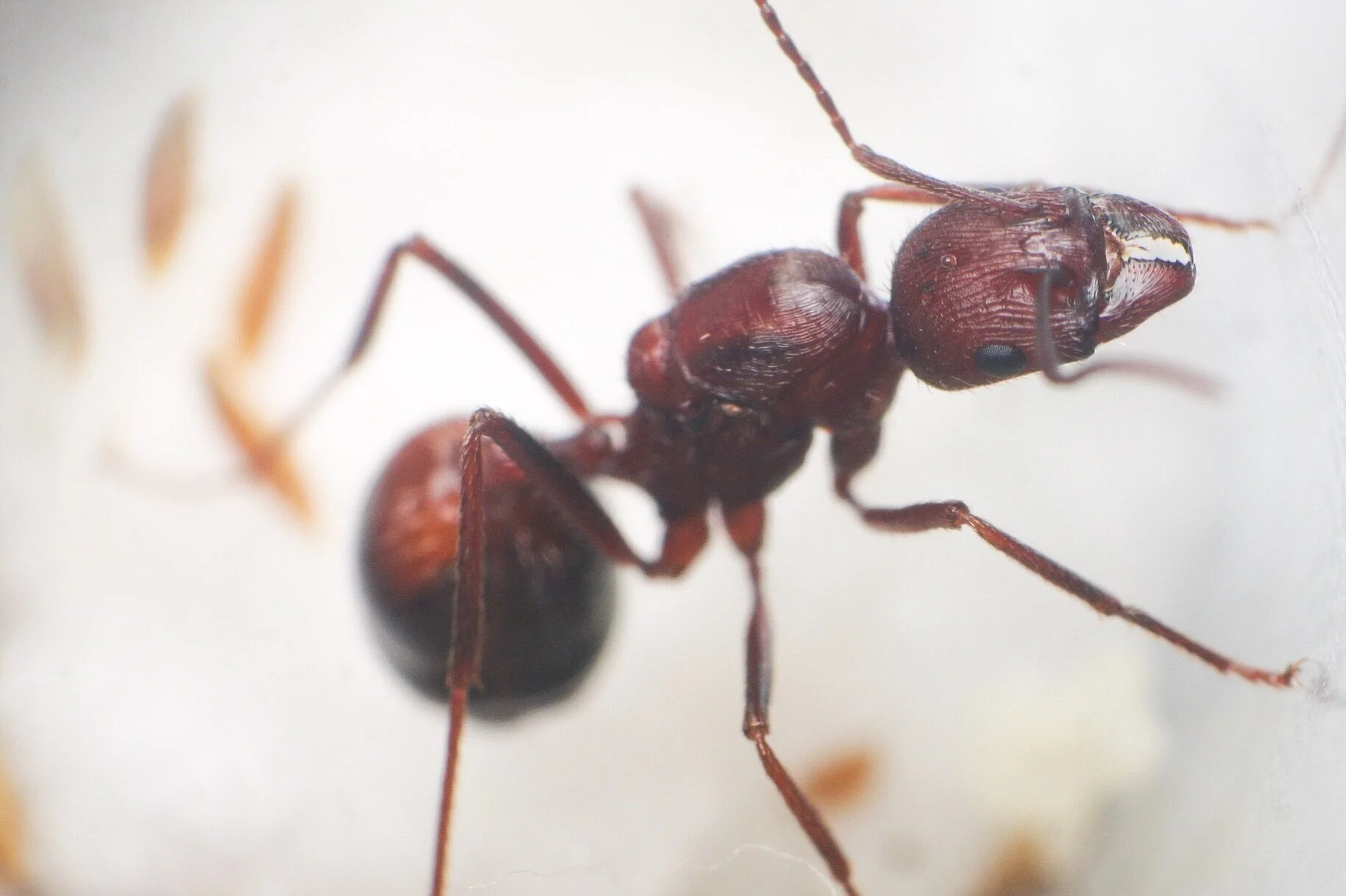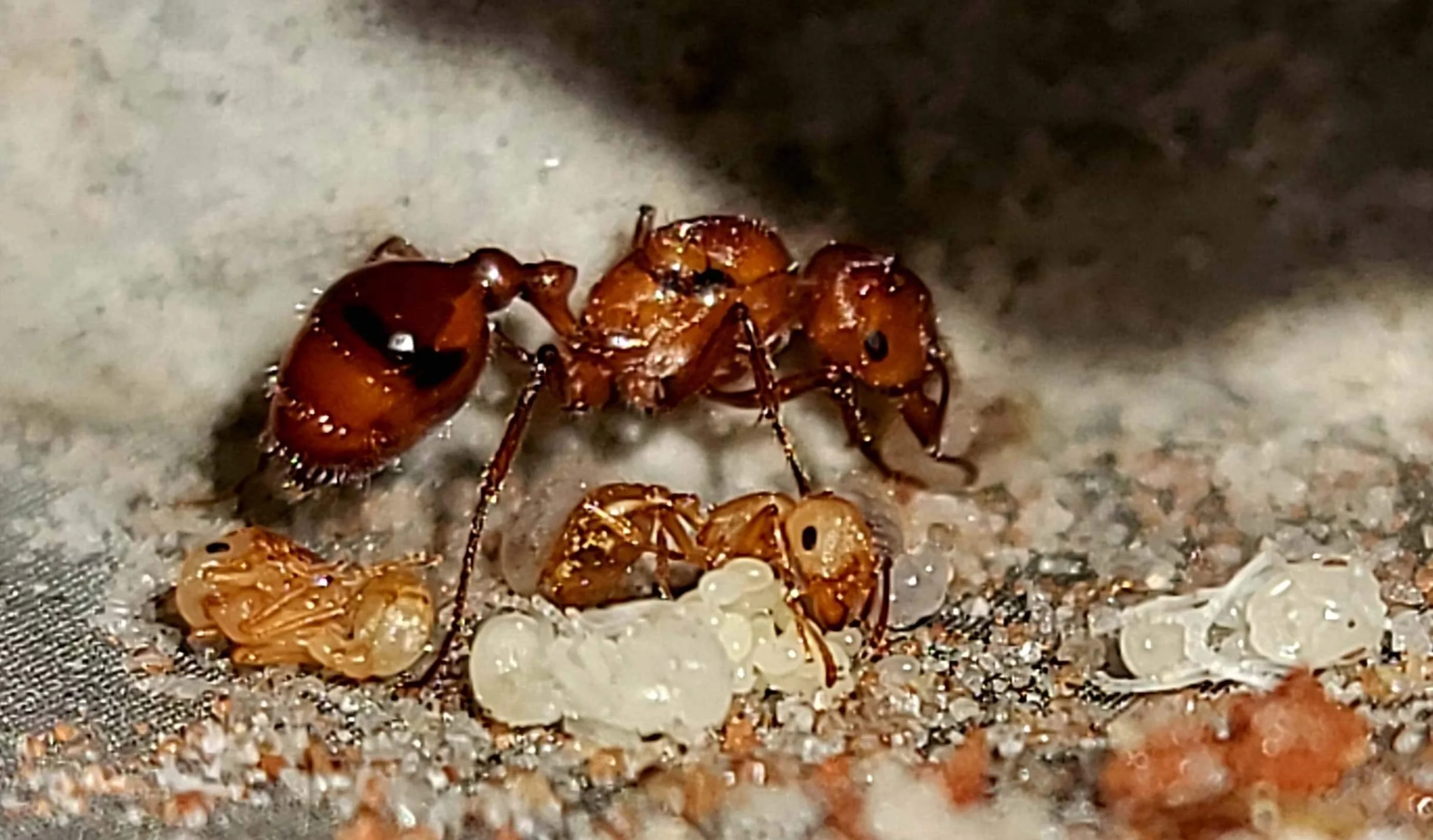
Here are a few general guidelines to help you along your way as you start your ant-keeping journey. Please remember that we are always available to answer any questions and address concerns, regardless of their scope or scale. Our dedication to providing support sets us apart in the ant-keeping community.
The usual suspects…..more care sheets to be addedd soon.
These care guides are based off of years of personal experience with ant keeping and specific experience with these ants. What works for us may not work for everyone depending on where in the country you live. Make sure to reach out if you are having any concerns.
-

Camponotus sp.
Level of experience required : Beginner
Sting : No
Diet : besides fresh drinking water at all times these ants need a 24/7 access to a carbohydrate source. this could be a hand mixed mixture of 1 part sugar 3 parts water, or non diluted https://a.co/d/as0Eox7 . For a protein source i personally raise and feed fruit flies primarily, while offering chopped cock roaches or meal worms every few weeks or so .
Heat: These ants are less heat dependent than most species but a warmer portion of the nest (mid 80s f) would speed up there very slow colony development.
Humidity: The camponotus species we typically carry don’t need nest humidity of any kind. Things an added benefit when raising young colonies because mold is hardly ever an issue.
Diapause/hibernation: Most of the species in this genus will benefit from cold temperatures diapause (50-55f) but some that we sell are exceptions. Please reach out to us if your are unsure about the species you purchased from us.
Barrier needed: Fluon. Or diy talcum powder/rubbing alcohol mix .
Suggested nest for founding colony: Tar Heel Ants: Mini Hearth
Suggested nest for mature colony: Tar Heel Ants: The Labyrinth
Colony life span in captivity: I have personally observed a colony that was 12 . With exceptional care I would estimate average life span between 7-9 years .
-

Myrmecocystus sp.
Level of experience required : intermediate to advanced
Sting : No
Diet : besides fresh drinking water at all times these ants need a 24/7 access to a carbohydrate source. this could be a hand mixed mixture of 1 part sugar 3 parts water, or non diluted Humming Bird Nectar . For a protein source i personally raise and feed fruit flies primarily, while offering chopped cock roaches or meal worms every few weeks or so .
Heat: These ants absolute need a good heat gradient ( a pin point location of hotter -90f-95f- and cooler-72f-78f- entire side of nest) produces the best results.
Humidity: humidity portion of the nest should stay at around 75% with some slight fluctuations in either direction being ok as long as it doesn’t exceed 5% away or over from 75%.
Diapause/hibernation: Not required but my personal colonies have benefitted greatly from being removed from heat and left at room temps from November to late February. This may also extend their life span by giving them a much-needed break from brood production.
Barrier needed: Fluon. These ants are exceptionally good at climbing all surfaces and can walk over most diy barriers in my experience.
Suggested nest for founding colony: Tar Heel Ants:The Lair
Suggested nest for mature colony: Tar Heel Ants: The StrongHold
Colony life span in captivity: I have personally observed a colony that was 8 years old . With exceptional care I would estimate average life span between 4-6 years .
-
Pogonomyrmex Sp.
Level of experience required :beginner
Sting : yes
Diet : can survive solely on seeds and fresh drinking water but would appreciate fresh killed insects and a carbohydrate source as well .
Heat: they are comfortable with higher heat temperatures than most species but in my experience a good heat gradient ( a hotter-90f-95f- and cooler-72f-78f- side of nest) produces the best results.
Humidity: humidity portion of the nest should stay at around 75% with some slight fluctuations in either direction being ok as long as it doesn’t exceed 5% away or over from 75%.
Diapause/Hibernation: Not needed but my personal colonies have benefited greatly from removing them from heat and leavinbg them at room temps from November to late February. This may also extend their life span by giving them a much-needed break from brood production.
Barrier needed: none. These ants are not great at all at climbing smooth flat surfaces .
Suggested nest for founding colony: Tar heel ants: Fallen Fortress
Suggested nest for mature colony: Tar Heel Ants: Mini Labyrinth
Colony life span in captivity: I have personally observed a colony that was 13 years old. With exceptional care I would estimate average life span between 6-8 years .


